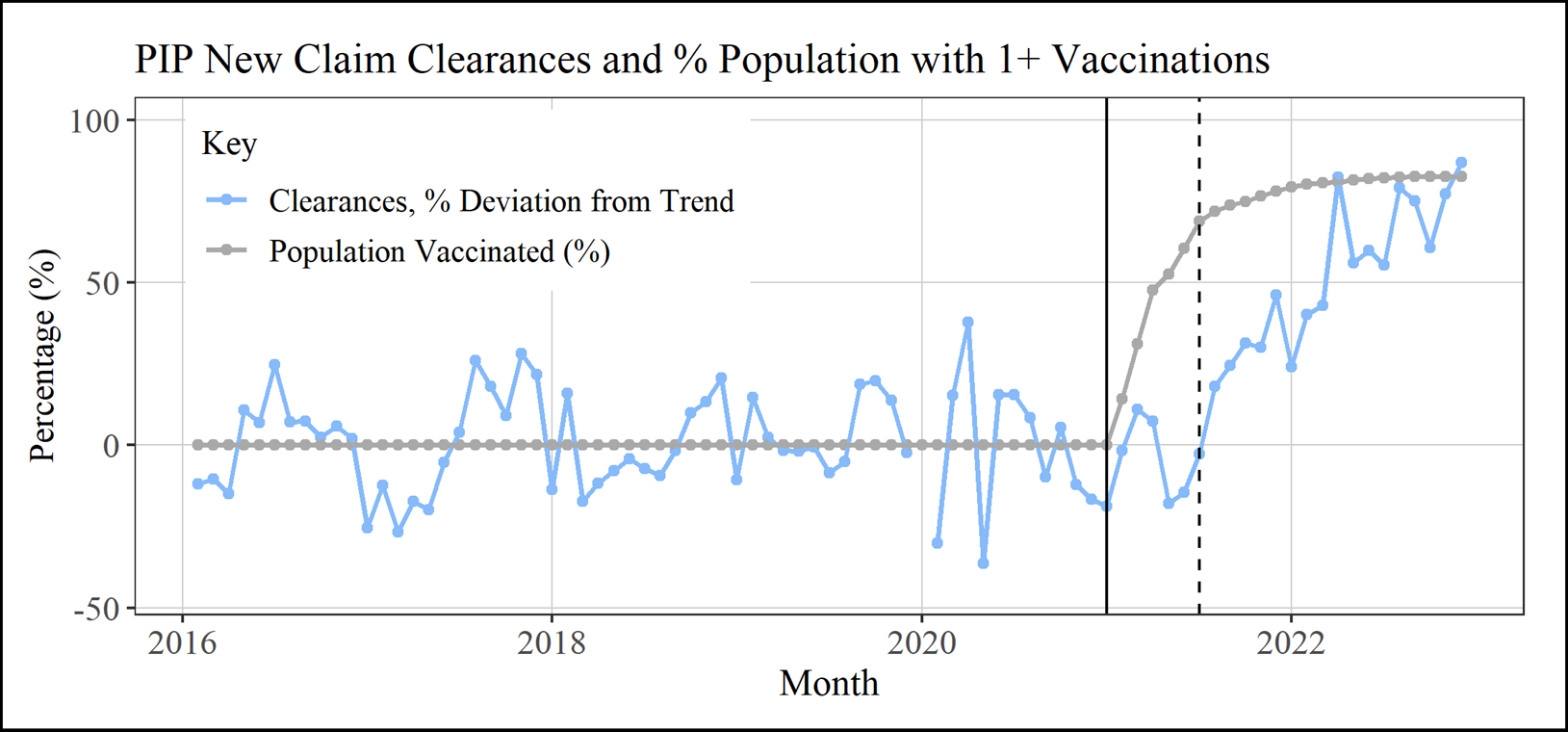Report publish date: July - 2023
Last update date: Jan - 2024
E.R. Dalby, PhD
View Full Report: UK PIP Report
This report examines the impact of the COVID-19 pandemic and correponding public health policies on health outcomes, focusing on the United Kingdom's Personal Independence Payments (PIP) for disabilities. Our analysis reveals a significant increase in PIP claims and awards after early 2021, unrelated to changes in the working-age population or rejection rates of applications. This rise coincides with the COVID-19 vaccination rollout and the alpha variant wave in 2020-2021.
The report suggests that disability rates or severity, as indicated by PIP data, have escalated since the pandemic onset, potentially linked to vaccine-induced production of the spike protein and reported adverse events. Despite the SARS-Cov-2 virus mainly affecting the elderly and chronically ill, the pandemic's onset led to widespread fear and stringent policies impacting all citizens. Long-term sequelae, suspected to be autoimmune, affected many post-infection.
The report notes politicization and censorship regarding vaccine safety concerns and adverse events. Years later, even as the virus became less pathogenic, non-COVID excess deaths and disability rates are still high. This analysis of the UK, with its high vaccination rate and strict lockdowns, raises questions about the effectiveness of its public health policies during the pandemic.
Country: UK
Period: 2016 until 2023.
Data Source: Stat-Xplore databases.
Stat-Xplore hosts data and statistics for various social benefits provided by the United Kingdom's Department for Work and Pensions (DWP). Financial support for working-age adults with disabilities is provided via the Personal Independence Payments system (PIP).
Information regarding PIP statistics:
Official Statistics: Personal Independence Payment statistics April 2013 to April 2023
The PIP “cases with entitlement” data can be considered a monthly total caseload of claimants who are currently entitled to PIP. PIP displaced the UK's previous DLA system in 2013. As such, a sharp increase in cases/claims was observed in the few years following the initiation of PIP, which has been explained as “capacity issues” by the DWP; for this reason, only data points collected in 2016 and after are included in this set of analyses.
The statistics for "claims with entitlement" under PIP represent the cumulative count of all cases with established rights in the system for a given month, referred to as the caseload. This encompasses individuals actively receiving PIP payments and those eligible for PIP whose payments are temporarily halted (such as during hospital stays). Here we examine trends in the caseload total, including new claims, Disability Living Allowance (DLA) reassessments, normal rules claims, and SREL (special rules for end-of-life) claims.
Summary:

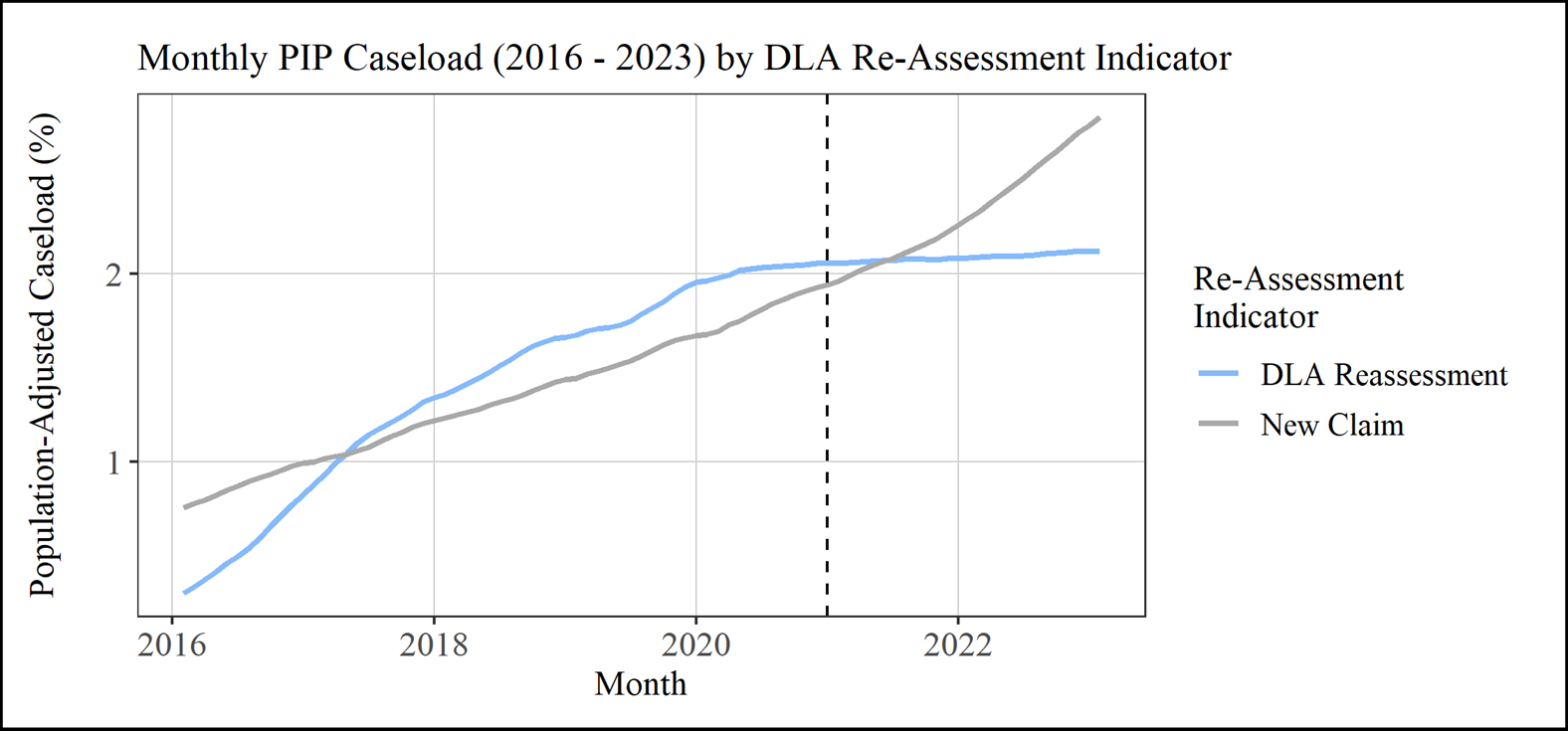
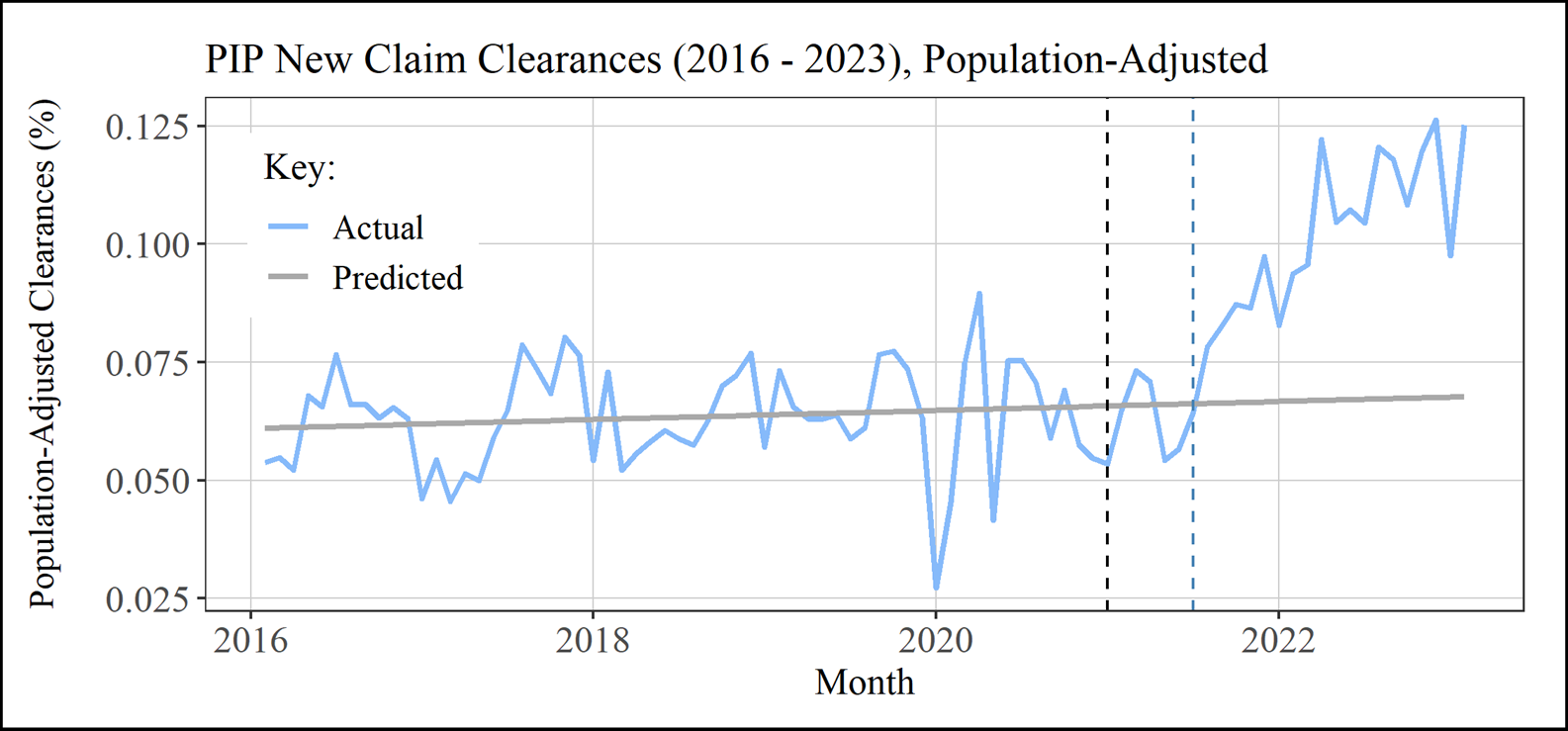
Summary:
The DWP (Department for Work and Pensions) clearance times suggest a 3-5 month gap between claim clearance and initial registration, potentially extending to 9 months if claimants wait the required 3 months after start of symptoms before applying. While most individuals might not delay this long, this should be considered when analyzing clearance data.
The chart uses linear regression on 2016-2019 data to predict trends. The solid vertical line marks the UK's vaccine rollout in early January 2021 and, accounting for up to 6 months claim processing, another dashed marker 6 months post-rollout. An uptick in disabilities caused by long-term COVID would be expected to appear in late 2020, following an initial pandemic-related delay.
Summary:
Since February 2021, enhanced-level awards (for more severe disabilities) have exceeded standard-level awards, accounting for more than 52% of new clearances as of October 2023, an effect that is particularly notable in the 20-29 age group.
Before 2021, standard-level awards dominated clearances. Post-2021, the proportion of enhanced-level clearances rose, nearing parity with standard-level awards by early 2023. This pattern is most pronounced in the 20-29 age group, suggesting a significant shift in the nature of the disabilities being claimed in this demographic.
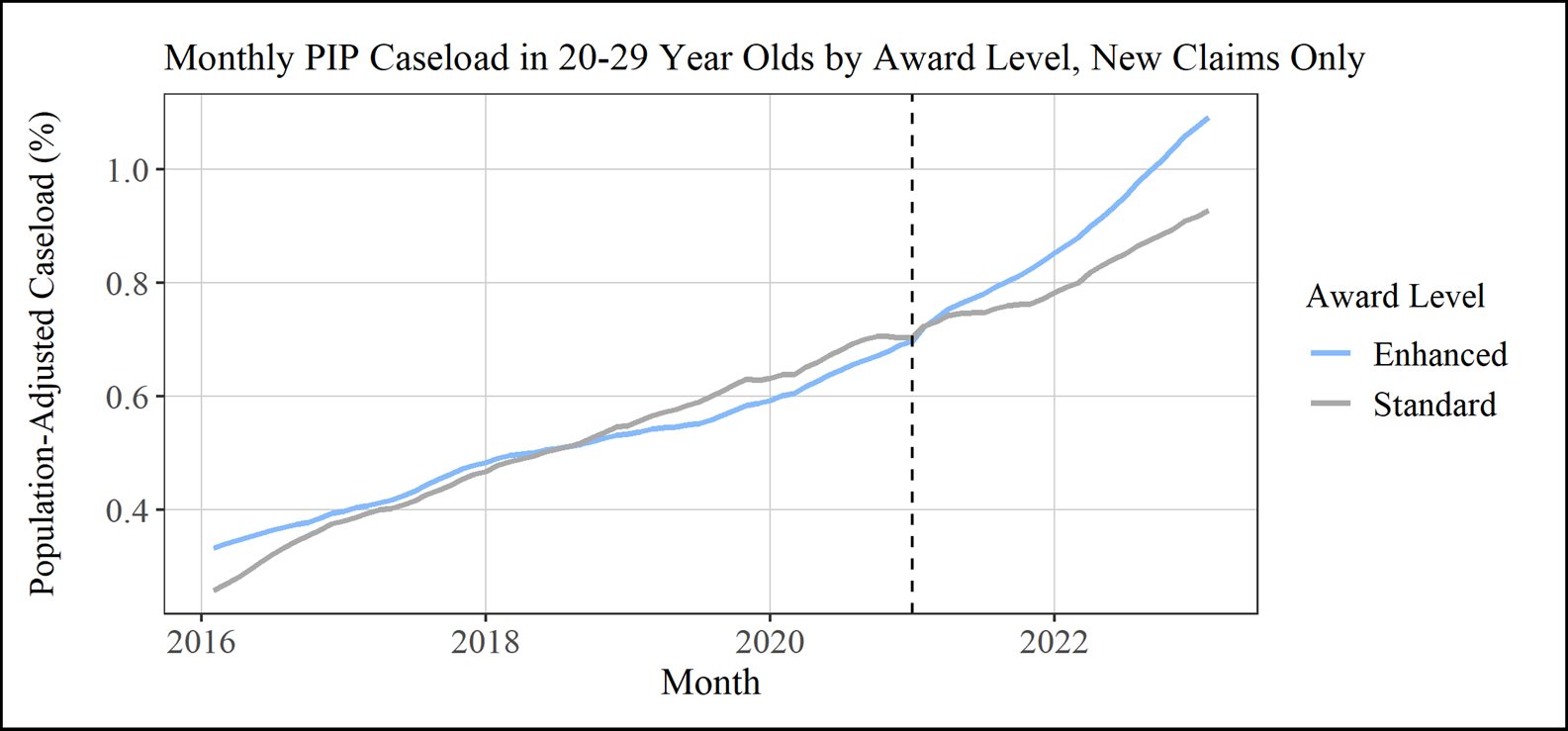
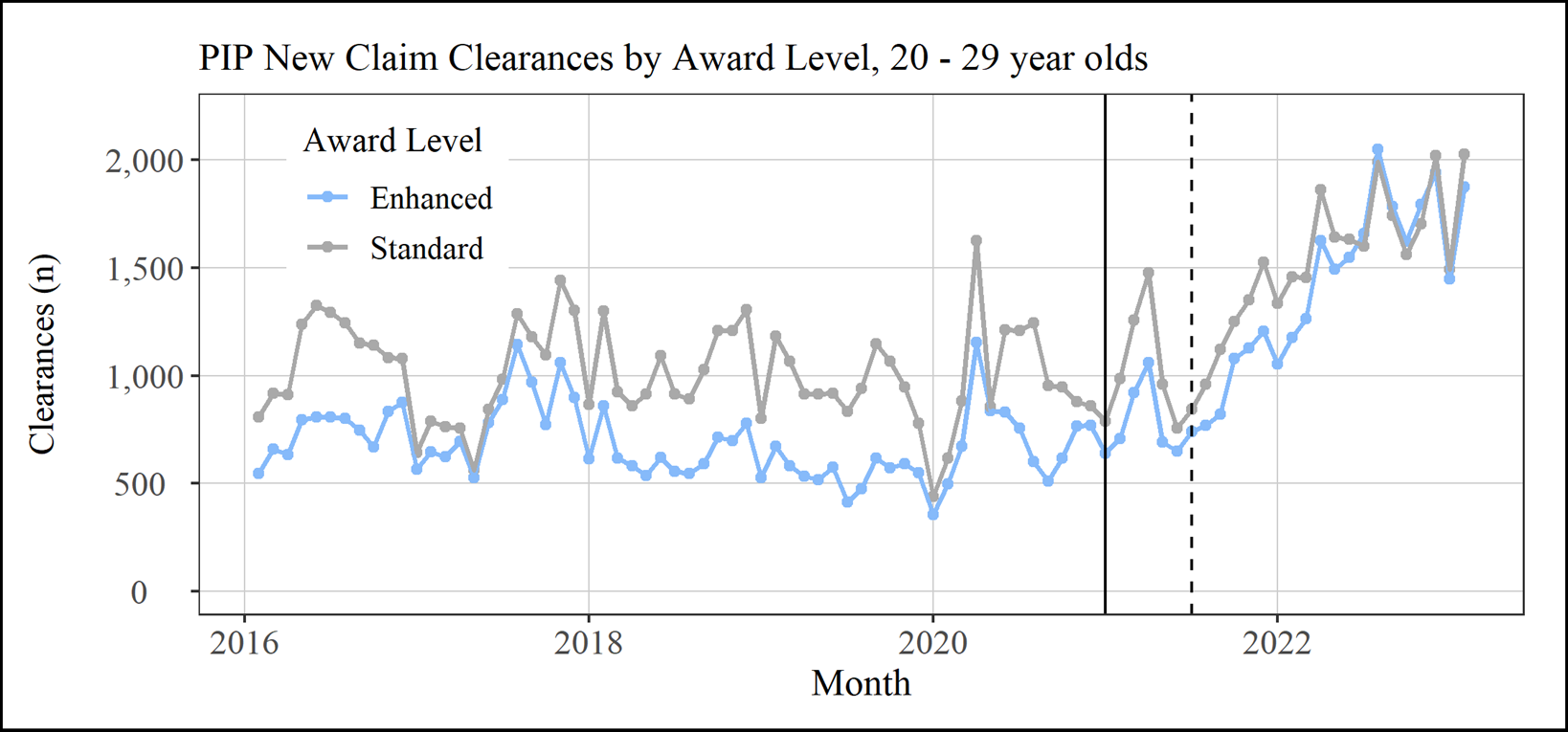
A rise in disability clearances was observed after the COVID-19 vaccine rollout in January 2021. This increase did not occur in the months following the initial spread of COVID-19 in mid-2020.
When addressed, the rise in disability rates is often attributed to long-term effects of COVID-19, known as "long COVID," characterized by prolonged fatigue and other symptoms. The condition's autoimmune nature suggests a possible link to infections triggering autoimmunity.
It's unclear whether the increase in clearances is more closely related to severe COVID-19 cases or vaccination, primarily due to the unknown time lag between symptom onset and claim clearance.
Despite the decline of the Delta variant and the booster campaign by early 2022, new claims for disability support have continued at an elevated level.
